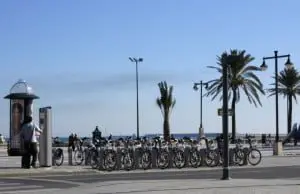With its vibrant history and diverse influences, the Spanish language is a treasure trove of unique expressions. However, some of these phrases can be particularly challenging for some learners to grasp.
That’s the purpose of this guide: to help you shed some light on a selection of frequently used Spanish expressions, from foundational basics to nuanced themes with references to the time and weather.
Let’s jump right into it!
Understanding the Basics: Intro to Spanish Expressions
Every language has its peculiarities, and Spanish is no exception. Before diving deep into the intricate expressions, it’s crucial to have a solid understanding of the basic expressions in Spanish. These foundational phrases serve as stepping stones to more complex linguistic challenges.
For beginners, it’s not just about memorizing words but understanding the cultural context behind them. Spanish expressions often carry with them centuries of history and tradition, making them all the more fascinating.
Basic Expressions in Spanish: Where Most Learners Start
Starting with greetings, learners often begin with familiar phrases like “Hola” (Hello) and “Adiós” (Goodbye). However, even early on, there are challenges. Take “¿Qué tal?” for instance. While it translates to “What’s up?”, its usage is broader, encompassing greetings like “How are you?” or “How’s it going?”.
Beyond greetings, there are expressions of politeness and everyday interactions. “Por favor” (Please) and “Gracias” (Thank you) are staples, but what about “Encantado” (Pleased to meet you)? Such phrases enrich a learner’s conversational skills, making interactions more genuine.
Common Expressions in Spanish: Everyday Phrases with a Twist
As one progresses, they’ll stumble upon common expressions in Spanish that defy direct translation. For instance, “Estar por las nubes” doesn’t mean “to be by the clouds”. Instead, it’s an idiom indicating something is very expensive.
Similarly, “No tener pelos en la lengua” doesn’t literally mean “Not having hairs on the tongue”. It’s an idiom for someone who speaks their mind, a straight-shooter. These idiomatic expressions add color and flair to the language, making it lively and dynamic.
Negative Expressions in Spanish: Saying ‘No’ with Nuance
Spanish is a language brimming with emotion, and its negative expressions offer a glimpse into its depth. While “No” is straightforward, phrases like “Ni en sueños” (Not even in dreams) add layers of emphasis, translating to “Not a chance” or “In your dreams”.
Another example is “No verlo ni en pintura”, which literally means “Not to see it even in a painting”. It’s a way to express that you don’t want to see or have anything to do with someone. These expressions showcase the language’s richness and the importance of context.

Time Expressions in Spanish: Tracking Hours, Days, and Seasons
Discussing time in Spanish goes beyond just hours and minutes. Expressions often intertwine with activities or states of being. “A la vuelta de la esquina” (Around the corner) can mean an event is imminent. On the other hand, “Estar en las nubes” (To be in the clouds) often signifies daydreaming or being lost in thought.
Moreover, days of the week can be associated with specific feelings or activities. “Estar en su viernes” doesn’t mean “To be on Friday”, but rather to be in a good mood or excited, akin to having that “Friday feeling”.
![]()
Weather Expressions in Spanish: Describing Sun, Rain, and More
Weather is a universal topic of conversation, and Spanish has its unique set of phrases for it. Beyond the straightforward “Hace sol” (It’s sunny) or “Está lloviendo” (It’s raining), there are idioms like “Hace un frío que pela” (It’s freezing cold, literally “It’s a cold that peels”).
Another picturesque expression is “Llover a cántaros”, which translates to “Rain in pitchers”, meaning it’s pouring rain. Such expressions not only describe the weather but also paint a vivid picture, adding depth to conversations.
Conclusion: Mastering the Most Difficult Spanish Expressions
Spanish, with its myriad of expressions, offers a delightful challenge to learners. The key lies in understanding not just the words but the culture and history they encapsulate. By immersing oneself, especially in places like Valencia with its abundant Spanish courses, these intricate expressions become more accessible. Embrace the journey of learning, and soon, even the most challenging phrases will become second nature.






